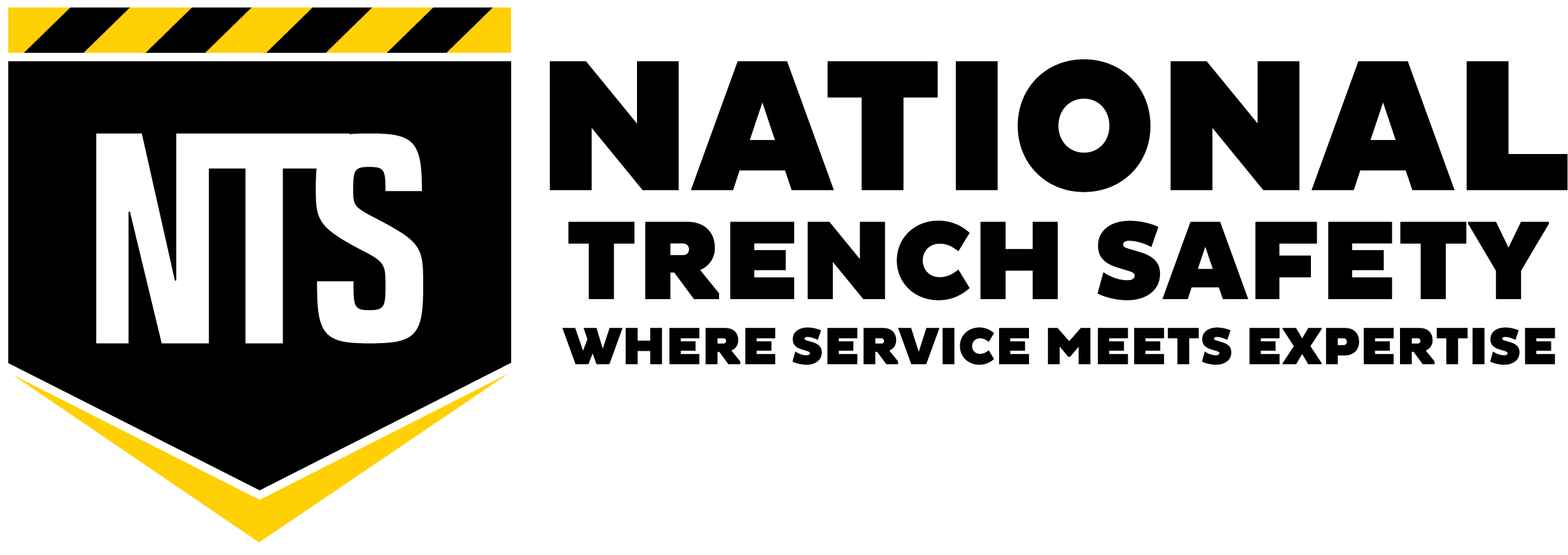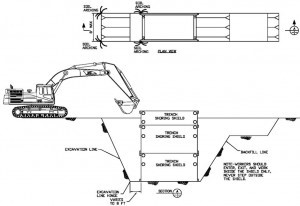I recently received a question regarding sloping at the open end of a trench shield that was being used on a pipeline project. The manufacturer’s tabulated data was unclear on the issue and an inspector was required that the sloping adheres to the OSHA Appendix B for sloping and benching.
This is a prime example of where a Hazard Analysis for every construction operation pays dividends. As mentioned above, the tabulated data was unclear, and OSHA is also unclear on this issue. For the contractor, there’s a significant financial impact, as the cost associated with sloping at the leading edge could be substantial if the slope has to be 1:1 or even 1.5:1. When working with a 1:1 to or 1.5:1 slope, the distance of unsupported side trench wall outside the shield leads to wall collapse of the trench and the excavator may end up too far from the shield to service the pipe laying operation.
In this particular operation, the trench is being excavated and the excavator reaches out and pulls the trench shield forward. This excavation is defined as a trench since OSHA categorizes a trench as an excavation that is deeper than it is wide. Additionally, for this particular review, the hazard created is that the soil bank at the excavation end could cave into the shield where workers are standing (there were no adjacent structure integrity concerns for this project). In this instance, it is possible for a Hazard Analysis conducted at the job site just prior to the trenching work to safely deal with the condition.
Typically, in trench product operations like these utilizing trench shields, trench end protection is not used because the following conditions usually exist:
- The shield is not pulled tight to the slope hinge (it is typically 2 ft to 6 ft away),
- The excavation line at the end of the trench shield is not vertical (there is typically some degree of slope depending on the soil condition),
- Soil arching occurs at the ends of a trench cave-in at the middle of the trench span, similar to the way hydraulic shores prevent a cave-in between the horizontal and vertical locations of the shore, and
- The time the trench excavation is left open is short (typically 1 hour or less).
There are limits to when these conditions are predictable; however, historical hydraulic shore spacing gives an indication of what may be reliable assumptions for the project. In Type A & Type B Soils the allowable horizontal spans are 6 ft to 8 ft and in Type C-60 Soils the spans are 4 ft to 6 ft depending on the excavation’s depth. These same horizontal spacing benchmarks should not be exceeded at the ends of a shield trench.
Given the fact that soil arching is occurring at the end of the trench, the degree of sloping may be able to be reduced for specific applications. Vertical walls should never be used but 0.25:1 in Type A &B Soils, and 0.5:1 in Type C Soils may work depending on specific job site conditions. The hazard analysis that takes place at the start of the trench excavation work should establish the sloping based on the job site conditions and after the excavation work begins the Competent Person should observe the sloping to confirm that it is not failing. At the end of a crew’s shift or if the trench end is going to be open for extended periods of time, the sloping should be increased if workers are going to continue working inside the shield.
It is also important to remember that with shielding operations workers must always enter, exit, and work inside the shield and never use the trench leading or trailing slopes for access or egress.
What is commonly become referred to as Type C-80 Soils in practice, prove difficult for trench shields as the soil tends to be less cohesive and will typically flow into the ends. In this case, the shield is dug into the soil and a leading edge plate should be attached to the front of the shield to prevent the soil from flowing in onto the workers according to manufacturer’s tabulated data and or site-specific engineering.






